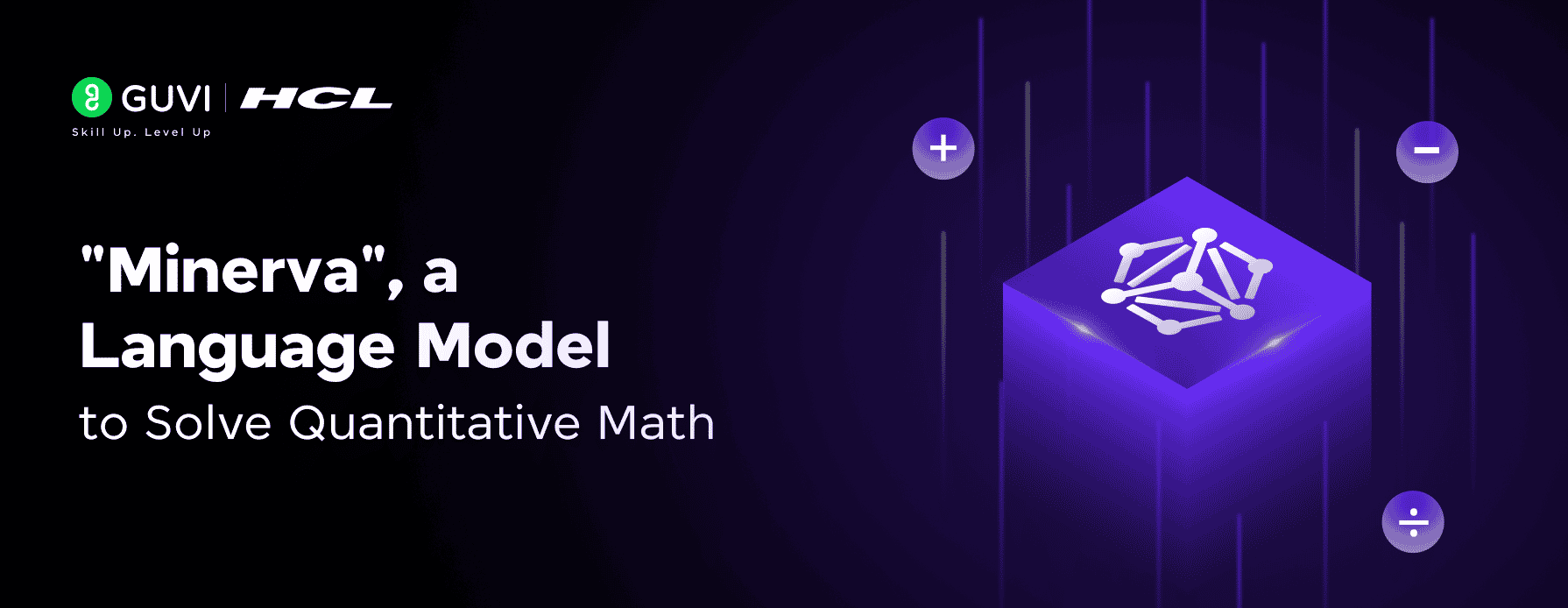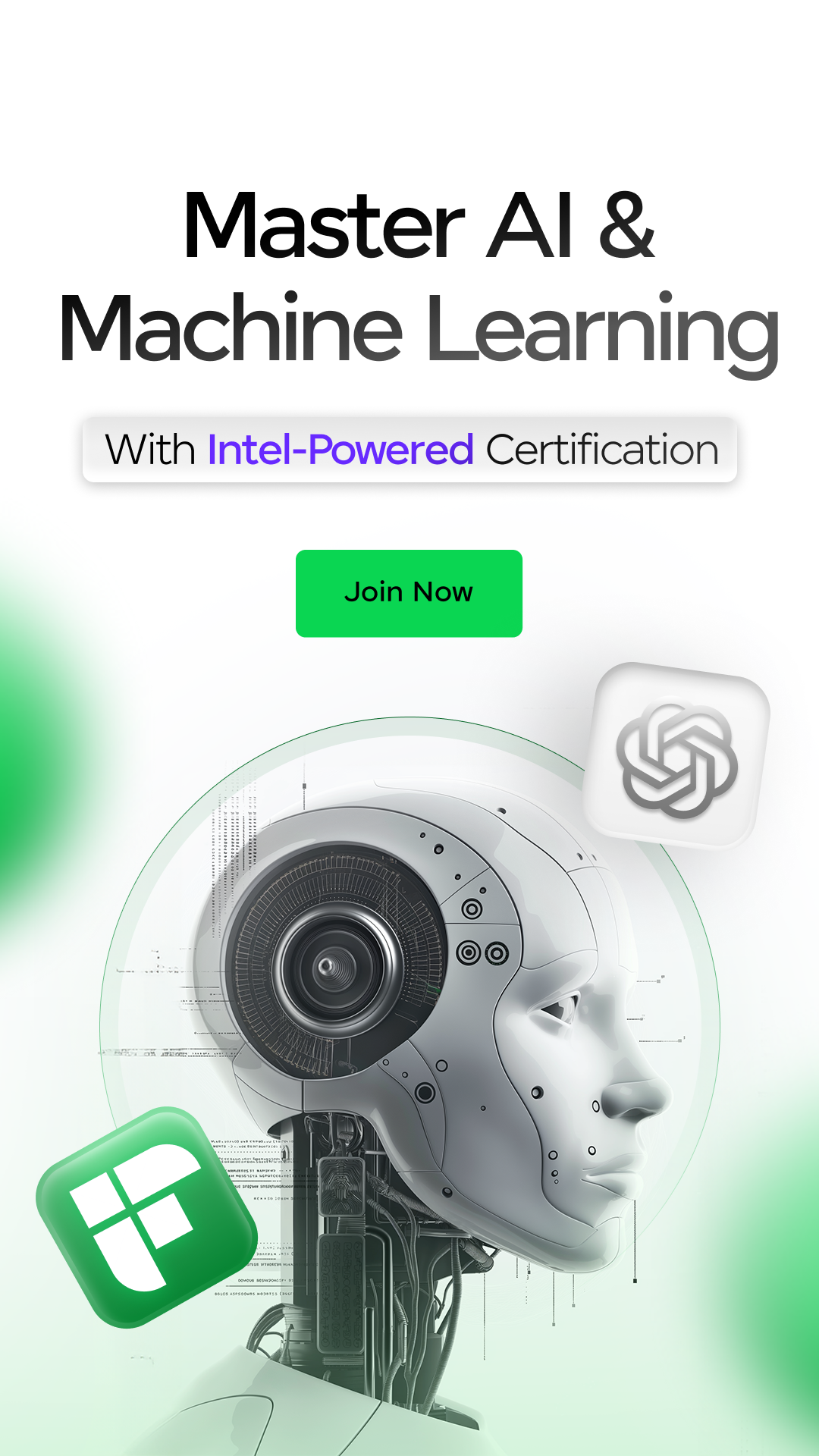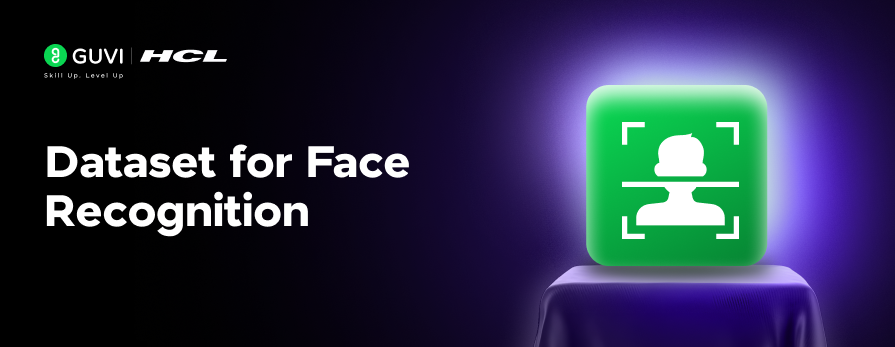
“Minerva”- A Language Model to Solve Quantitative Math
Sep 10, 2025 4 Min Read 2028 Views
(Last Updated)
Have you ever imagined an AI not just chatting with you but solving complex math problems, calculus, algebra, and statistics, with the same logic and precision as a human expert?
We’ve all seen ChatGPT amaze us with natural language understanding. But solving quantitative mathematics? That’s an entirely different game.
Meet Minerva, Google’s language model that pushes the boundaries of artificial intelligence by tackling hard math and science questions through step-by-step reasoning. In this blog, let’s explore what makes Minerva revolutionary, how it was trained, and what it can and can’t do. So, without further ado, let’s get started…
Table of contents
- What is Quantitative Math?
- What is a Language Model?
- What is Minerva?
- Pathways Language Model
- Example of a Minerva Solving a Problem:
- Limitations
- Conclusion
What is Quantitative Math?
Let’s first understand what the term “Quantitative” means in Data. Data that is quantifiable. We can apply all our analysis and mathematical concepts only with numbers. The data with numbers or that can be represented in any form of numbers is called Quantitative Data.
Now let’s go to Quantitative Math. It is easy to identify that it is a branch of Mathematics. But what does it focus on?! In simple terms, it focuses on the following studies.
- Study of Quantity
- Study on the numerical values
- Study on the relationships between numbers
We can use Quantitative math for analysis to solve problems that involve numerical data. Let me give you some examples.
- Statistics: Statistics is the basis of Data Analysis. Starting from collecting the data, organizing it, making an analysis, interpreting the data, making a lot of probability theories, and finally presenting the statistical inference.
- Geometry: Another good example is the geometrical shapes, such as the sizes and positions of objects, and how we can find relationships among them
- Algebra: Manipulating numbers with mathematical symbols, with rules and equations to solve and understand relationships between the variables.
- Calculus: Accumulation of quantities and their rate of change, with topics such as limits, derivatives, and integrals.
- Discrete Mathematics: When our Data is countable or discrete, we can study the data using mathematical structures such as graphs and networks
- Differential equations: This involves the study of mathematical models that describe the behavior of systems over time, including topics such as ordinary and partial differential equations
Quantitative math is a vast and diverse subject with many practical uses. These are just a few examples of the many areas within quantitative math. Each of these topics has many subtopics and applications in different fields, including science, engineering, finance, economics, and social sciences, to make predictions, test hypotheses, and solve real-world problems.
What is a Language Model?
When we type a message on a mobile or a Word document in a system or while writing an email, we might have come across the recommendation of words based on the sentence that we are forming.
Like in the above image, the prediction of words happening is based on a probability model and it is called a language model.
The language Model is an artificial intelligence system that uses statistical and probabilistic methods to predict the likelihood of a sequence of words. This system is trained on the learnings of recognizing patterns and identifying relationships between the words and the phrases using a large corpus of text data.
Not just predicting these words, think about the voice assistants such as Siri or Alexa. The Language model is helping the machines in processing the speech audio. Google Translate and Microsoft Translator are also using this Language model in translating one language to another.
Here are some examples of Language Models:
GPT-3: Generative Pre-trained Transformer 3 is a state-of-the-art neural language model developed by OpenAI. It has been trained on a massive corpus of text data and can perform a wide range of natural language processing tasks, such as
- Language Translation
- Text summarization, and
- Text completion.
BERT: Bidirectional Encoder Representations from Transformers is another neural language model developed by Google. It is trained on a large corpus of text data and can perform various NLP tasks, including
- Sentiment analysis,
- Question-answering, and
- Named entity recognition.
LSTM: Long Short-Term Memory is a type of recurrent neural network (RNN) language model that can learn long-term dependencies in sequences of words. It has been used for various NLP tasks, including
- Speech Recognition and
- Language translation.
Markov Model: It is a type of probabilistic model that can predict the likelihood of a sequence of words based on the frequency of their occurrence in the training data. Markov models have been used for various NLP applications, including
- Text generation and
- Speech recognition.
n-gram Model: It is a type of statistical language model that calculates the probability of a word based on the preceding n-1 words. N-gram models have been used for various NLP tasks, including
- Language modeling,
- Text classification, and
- Machine translation.
What is Minerva?
Now that we know what Quantitative Math is and what a Language model is, let us now understand what Minerva is.
Minerva is a Language Model that is capable of solving mathematical and scientific questions using step-by-step reasoning. It came into existence in April 2022 and it is unveiled by Google.
When it comes to Quantitative math, most of the language models cannot think and act like a human brain can! It still falls short of human-grade performance. This requires significant advancements in model architecture and training techniques.
Pathways Language Model
Minerva is built on a model called the Pathways Language model. We generally train a model to make the machine learn a task. But before we pick a model, we make thousands of models and run through many trials.
Just imagine, as humans, if we train a skill and learn to do it, it is stored in our memory and we can learn another new skill and train ourselves to do it as well. But what if we forget the skill that we learned every time we try to learn a new skill again?! It doesn’t make any sense, right?
But believe it or not, that is how we are creating new models only to perform a specific task. This is where our Pathways Language model comes into play, where we are making our model effective by performing more than task. A model with different capabilities when needed can stitch together to perform new and more complex tasks.
Let me tell you something mindblowing!
We all know that, to train a model, we need a dataset. To train the model “Minerva,” Google claims that it used 118 GB of scientific papers and web pages containing mathematical expressions!!!
In Maths, the symbols play an important role and when we do text cleaning, it is important to understand these symbols and the actions it is supposed to perform.
Let me show you an example.
In the above image, There is no understanding here between the variables E, m, c, and the number 2.
Here you can see how carefully the Minerva processing is done in terms of the symbols and expressions in Mathematics. Einstein’s equation is equal to the m, mass, and the square of c, the speed of light. We understand that E is equal to the variable ‘m’ and the square of the variable ‘c’.
How an ensembling technique makes different models and chooses the best. Minerva uses a neural network that compares the solutions obtained from different calculation methods and chooses the most appropriate to give us the answer.
We all see the accuracy of a model once it is trained. This Minerva model, once it is trained it gives an accuracy of 50.3 %
If you think it is less, the other state-of-the-art model’s accuracy was only 6.9%. Minerva has raised its standards compared to other models, from 6.9% to 50.3% which is a tremendous achievement in the field of AI with Quantitative Math.
It’s even more awe-inspiring, mainly because the prediction of this accuracy was forecasted only in 2025. Google has achieved this accuracy in 2022, and it is done 3 years before the forecasted year. And this is the reason that amazes the entire AI world.
Another amazing thing about Minerva is, it is not using any calculator to solve Math problems. It is using the following techniques.
- Few-shot Prompting
Ability to learn tasks with limited examples - Chain of Thoughts
Prompted more to produce reasoning steps - Scratchpad Prompting
Allows the model to produce a sequence of tokens - Majority Voting
Takes the answer that came more often than the others
Example of a Minerva Solving a Problem:
Here is an example of Minerva solving a problem using Calculus and Trigonometry! For a math person like me, these steps are just mind-blowing! It is like how exactly a human will do!
Limitations
For Math problems, Minerva is correct 50% of the time. That means it is not going to correctly answer all the time. The accuracy percentage is much better than the other state-of-the-art models in the industry, but it is still in the developing phase.
This is an example of a reasoning error because the solution does not follow a logical chain of thought.
Here, the model got the correct answer with faulty reasoning (False Positive)
The model’s answers cannot be automatically verified. Even if the result is correct, the steps used might be wrong. Despite all its limitations, this is considered such a breakthrough and is expected to achieve much greater results in the future.
If you want to learn more about how Language Models helps in our day-to-day life and how learning can impact your surroundings, consider enrolling in HCL GUVI’s IITM Pravartak Certified Artificial Intelligence and Machine Learning course that teaches NLP, Cloud technologies, Deep learning, and much more that you can learn directly from industry experts.
Conclusion
In conclusion, Minerva isn’t just an experiment; it’s a vision of the future, where AI models help humans understand and solve some of the world’s most challenging quantitative problems.
Whether you’re a student, researcher, or curious mind, this breakthrough proves that language models can think mathematically, and we’re just getting started.
So next time you struggle with calculus, know this: your AI math partner is already learning, solving, and reasoning—waiting to assist.





























Did you enjoy this article?